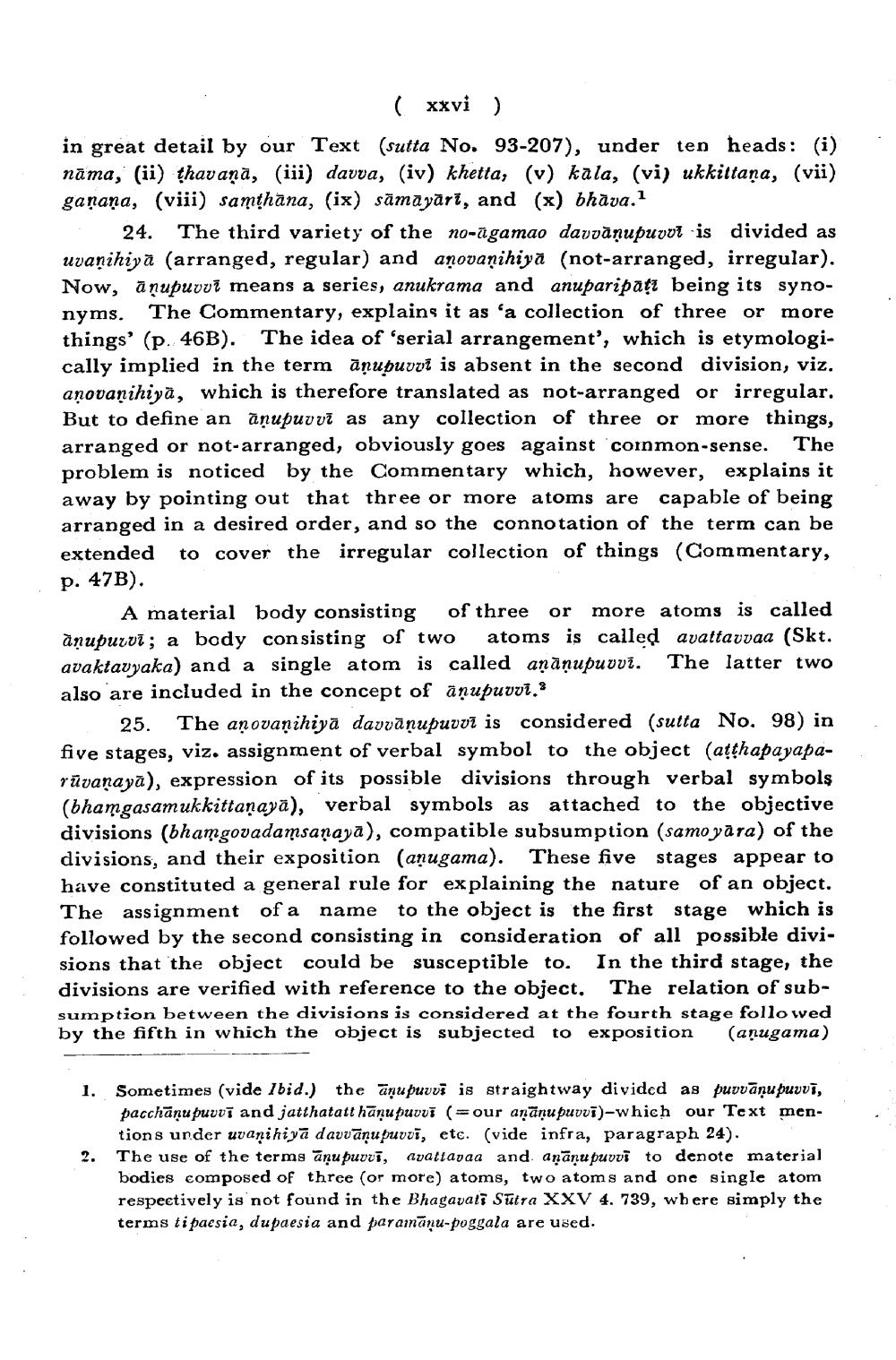________________
( xxvi) in great detail by our Text (sutta No. 93-207), under ten heads: (i) nāma, (ii) thavanā, (iii) davva, (iv) khetta, (v) kala, (vi) ukkittaņa, (vii) gañana, (viii) samthāna, (ix) samayāri, and (x) bhāva.
24. The third variety of the no-agamao davvānupuvot is divided as uvanihiya (arranged, regular) and aạovanihiyă (not-arranged, irregular). Now, ā nupuvvl means a series, anukrama and anuparipati being its synonyms. The Commentary, explains it as 'a collection of three or more things' (p. 46B). The idea of 'serial arrangement', which is etymologically implied in the term āņupuvut is absent in the second divi anovanihiya, which is therefore translated as not-arranged or irregular. But to define an āņupuvvī as any collection of three or more things, arranged or not-arranged, obviously goes against cornmon-sense. The problem is noticed by the Commentary which, however, explains it away by pointing out that three or more atoms are capable of being arranged in a desired order, and so the connotation of the term can be extended to cover the irregular collection of things (Commentary, p. 47B).
A material body consisting of three or more atoms is called anupurvī; a body consisting of two atoms is called avattavvaa (Skt. avaktavyaka) and a single atom is called anānupuvui. The latter two also are included in the concept of anupuvvi.
25. The anovanihiya davvānupuvuż is considered (sutta No. 98) in five stages, viz. assignment of verbal symbol to the object (atthapayaparūvanaya), expression of its possible divisions through verbal symbols (bhamgasamukkittanaya), verbal symbols as attached to the objective divisions (bhamgovadamsanaya), compatible subsumption (samo yara) of the divisions, and their exposition (anugama). These five stages appear to have constituted a general rule for explaining the nature of an object. The assignment of a name to the object is the first stage which is followed by the second consisting in consideration of all possible divisions that the object could be susceptible to. In the third stage, the divisions are verified with reference to the object. The relation of subsumption between the divisions is considered at the fourth stage followed by the fifth in which the object is subjected to exposition (anugama)
1. Sometimes (vide Ibid.) the anupuvvk is straightway divided as puvvānu puuvi,
pacchānu puuvi and jatthatatt hānu puvvi (=our anāņu puvvi)-which our Text mentions under uvanihiya davvānupuvdi, etc. (vide infra, paragraph 24). The use of the terms anu puuvi, avattavaa and anānu puvvi to denote material bodies composed of three (or more) atoms, two atoms and one single atom respectively is not found in the Bhagavati Sutra XXV 4. 739, where simply the terms ti paesie, dupaesia and paramānu-poggala are used.




